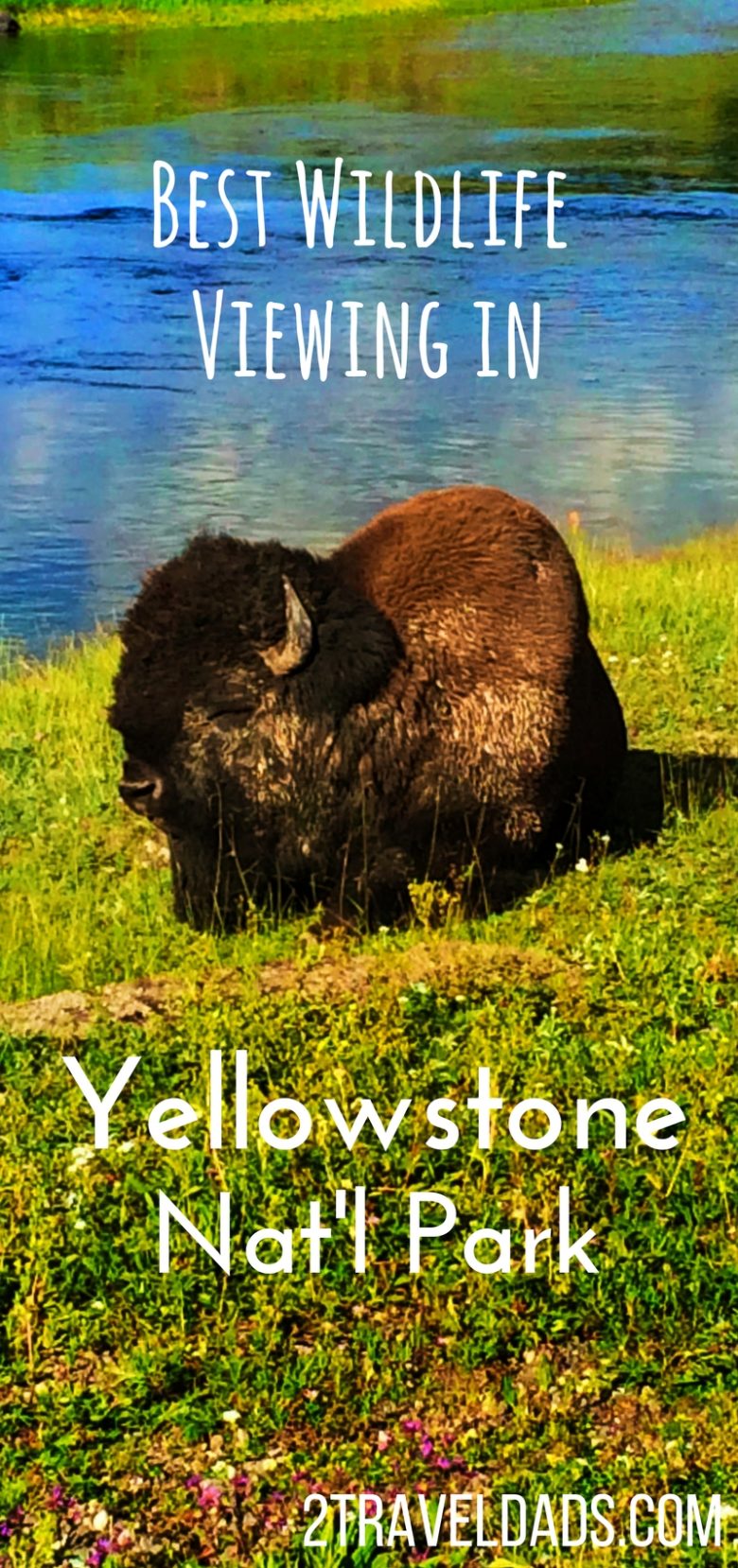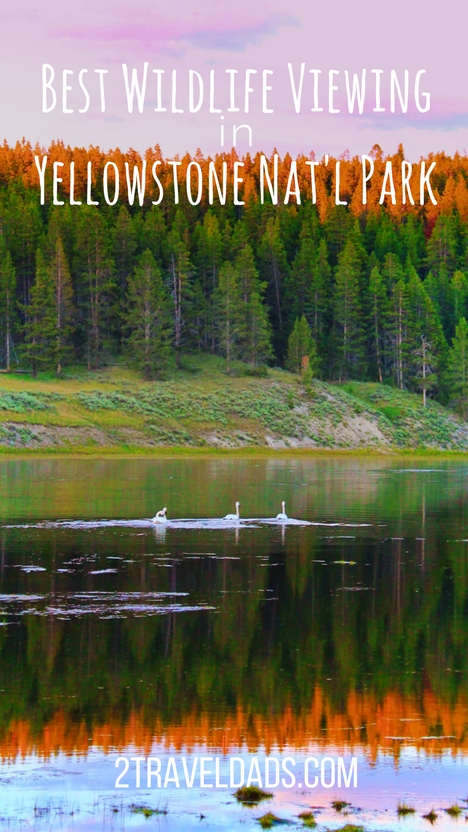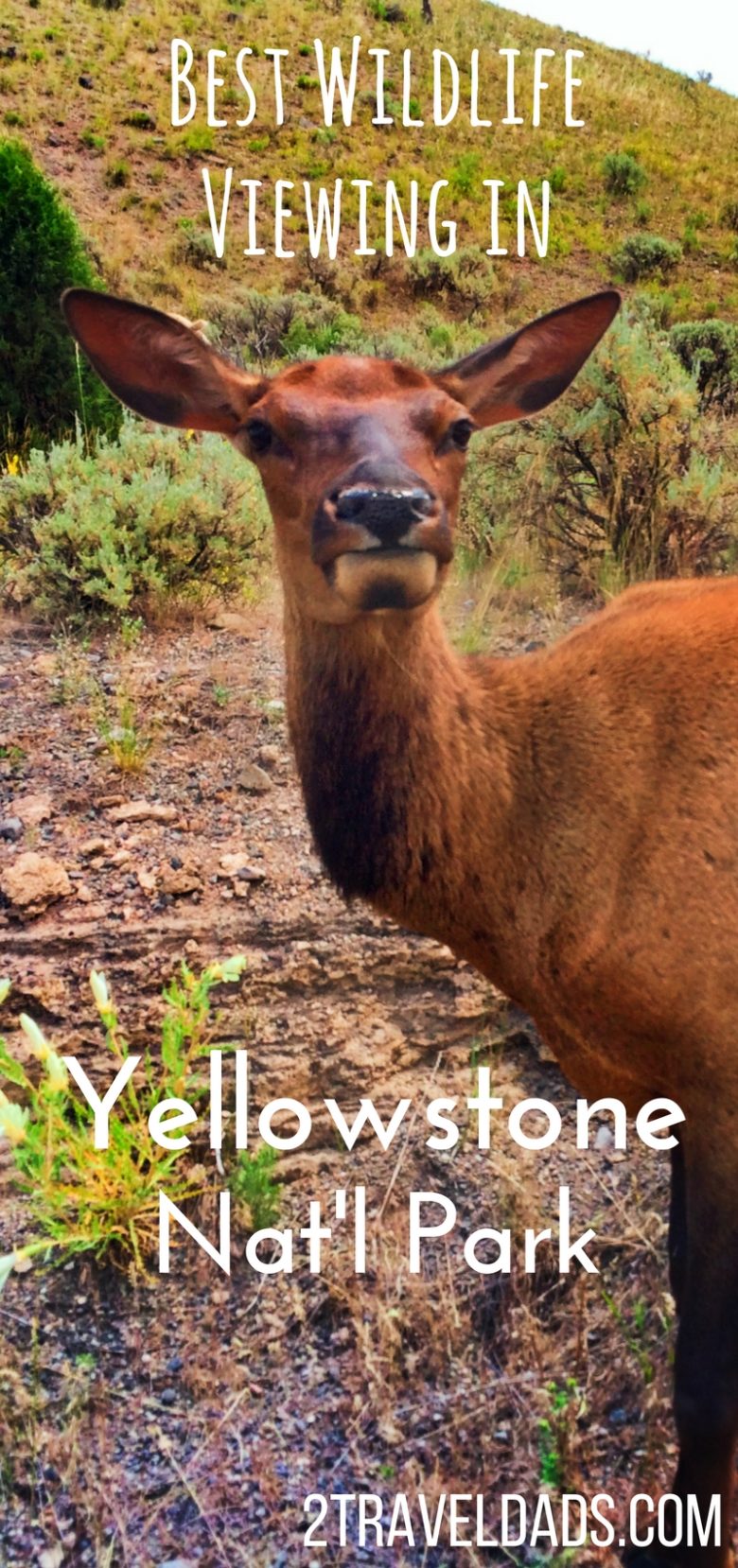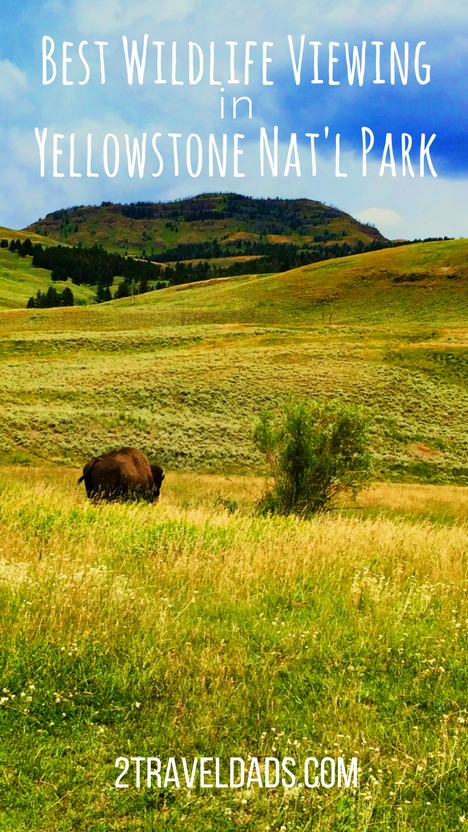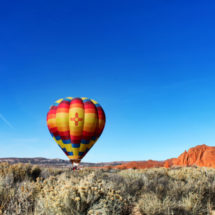In addition to geysers, the exciting thing about going to Yellowstone National Park is the wildlife. There are the standard deer and chipmunks that you’d expect to see, but there is so much more. The bison are always a real hit with our family… but then so are the bears just outside of our car window… and the elk walking through the parking lot… Wildlife in Yellowstone National Park is closer than you might expect and often not afraid of the millions of people they see every year, so there are lots of rules.
This is our guide to the best wildlife viewing in Yellowstone National Park, from where we most frequently see herds to our favorite places to park and wait for the wildlife to come to us. We’ve been to Yellowstone 10+ times and have a ton of experience, so enjoy and I hope you have an amazing wildlife experience too!
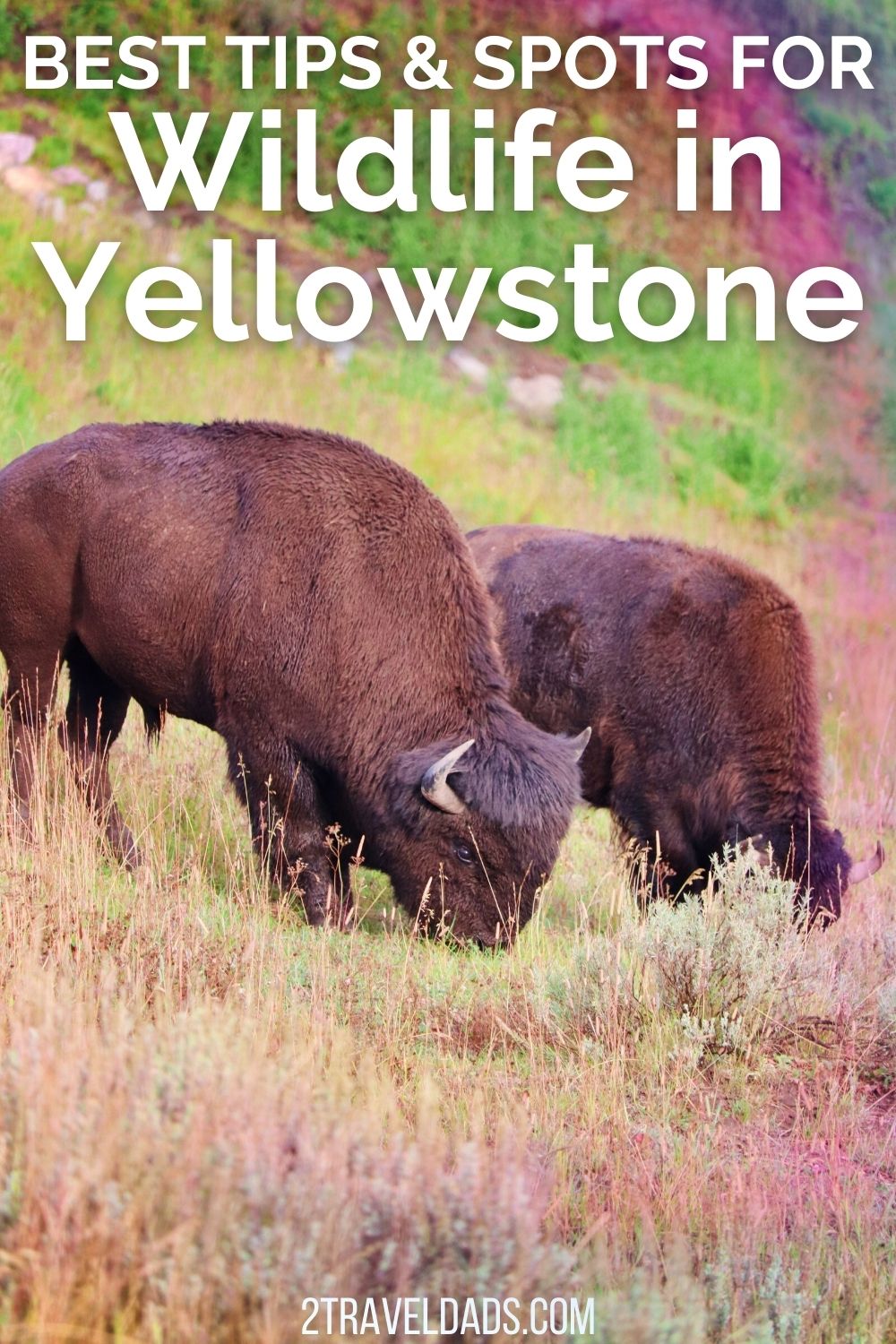
Viewing Wildlife in Yellowstone National Park
We love spotting bears across a valley or watching a herd of elk in the distance, but in Yellowstone it’s much more involved than that. While the overall rule is to not approach wildlife, sometimes it just approaches you, so here are the best places to safely experience this from your car (see map below for planning). Wildlife in Yellowstone is bold and experiencing it is that easy, but it still can be dangerous.
Disclaimer: we are writing about experiencing wildlife in Yellowstone from the POV of somebody in their car or common area, not from the stance of a backwoods hiker or somebody gallivanting on their own. Be safe.
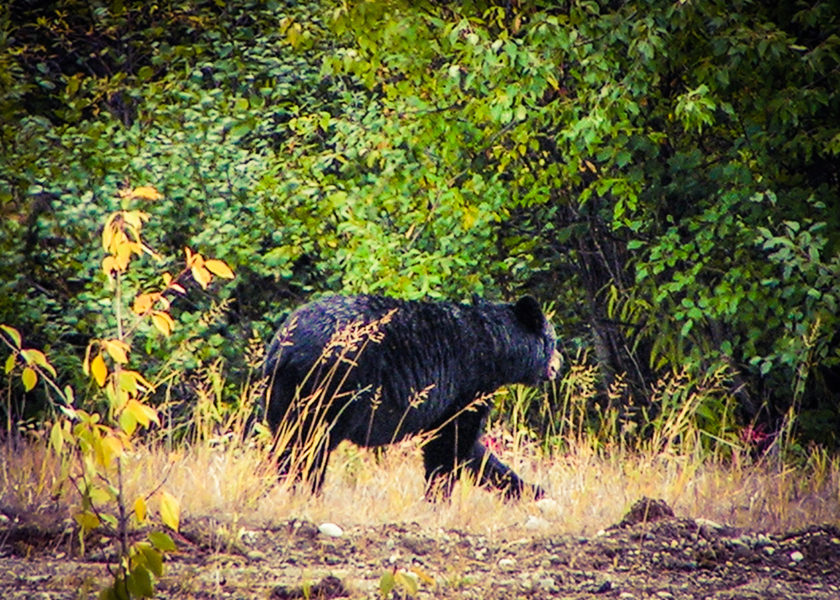
Where to see Black and Grizzly Bears in Yellowstone
Bears of both the black and grizzly variety love the hillsides where they can forage for berries and roots, so keeping an eye out in the Tower Falls and Mt Washburn areas are best. We’ve seen black bears sitting directly next to the trail to Tower Falls, and then seen grizzly on the Blacktail Plateau Drive (6 mile dirt road) far from anyone.
For where to see bears in Yellowstone, Mt Washburn is the other best place. Take the Mt Washburn road up the mountain and stop at the viewpoints. Sit and wait or continue on, but visiting these areas up on the mountain gets you as far removed from high traffic areas as possible while still enjoying the safety of your vehicle. Wildlife safety is important, especially with bears!
Please note though, the bears aren’t reading our blog, so they might choose other places to hang out too.
How to Spot a Bear in Yellowstone
If bears are far away, you might not think twice about them, mistaking them for a rock or bush, but take out your binoculars (we love our Bushnell autofocus binocs) and you’ll get to watch them foraging and playing and it’s amazing! Dusk is a great time to spot bears on the western slopes of hills due to the low sunlight and active time of day.
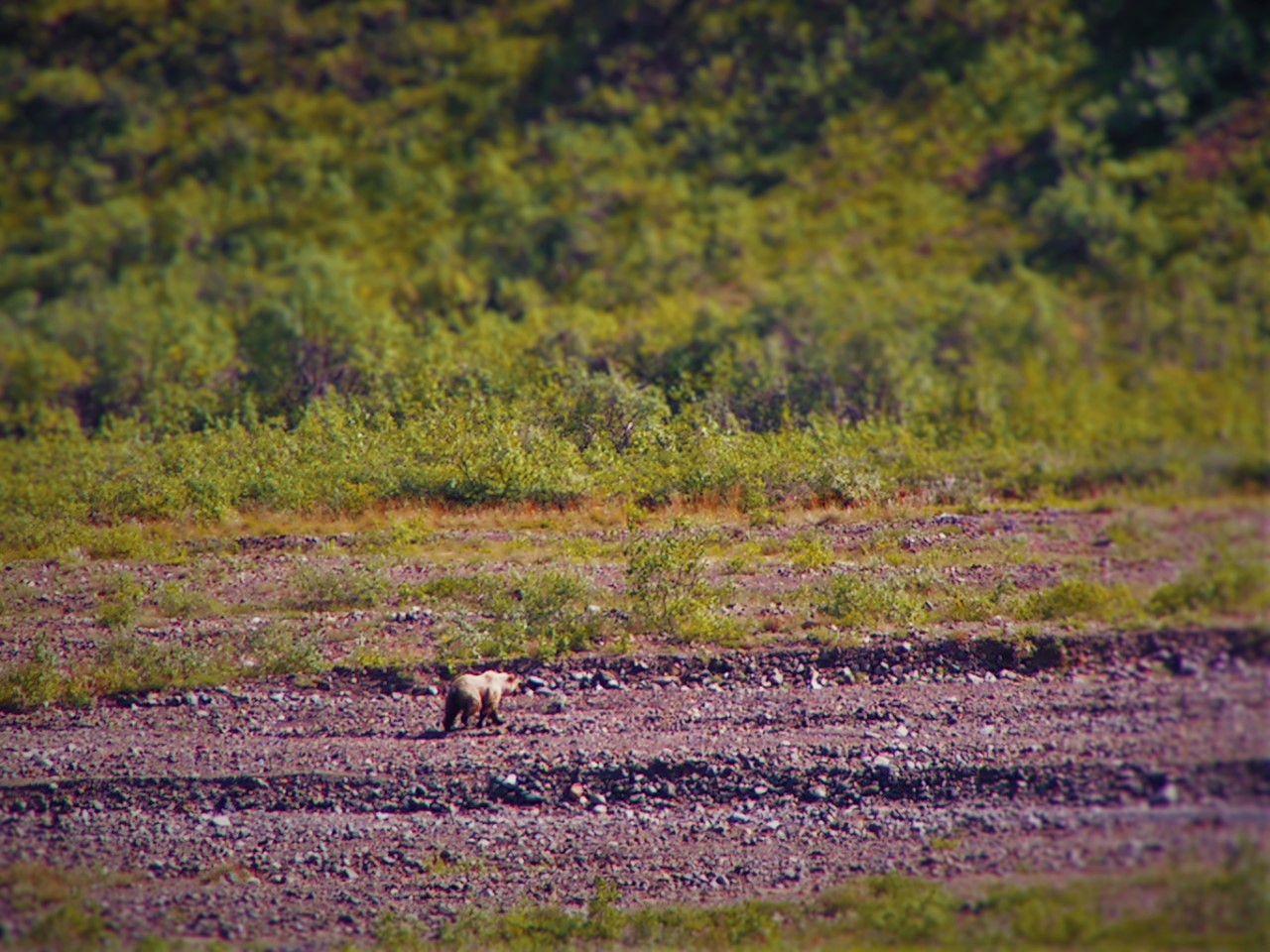
On our most recent trip, we were fortunate enough to see 6 black bears and 2 grizzlies, all in the zone from Calcite Springs Overlook to Canyon Village (Tower/Washburn). Here’s how we saw them and where:
- Black 1/2/3 – in a field at the base of a hill. 100 yards away. Dusk.
- Black 4 – on a hillside eating. 50 yards away. Midday.
- Black 5/6 – Mama and cub on the hillside directly next to us. Couldn’t get out of the car because they were RIGHT THERE. 5 yards away. Midday.
- Grizzly 1 – in a field at the base of a hill. 200 yards away. Dusk.
- Grizzly 2 – in a very small meadow next to the road. 10 yards away. Dusk.
Important identification note: brown/grizzly bears can be black or blonde too, not just brown. Look for shoulder haunches, especially if you’re alone and want to report a sighting back to the ranger station.

Where to see Yellowstone’s Bison Herds
Bison are some of the most prevalent wildlife in Yellowstone; they’re almost everywhere in the Park. While they do move around a lot, there are two guaranteed spots to find them: the Hayden and Lamar valleys. The bison herds are large and can be dangerous, so here’s how best to see them safely.
Hayden Valley Bison Viewing
Each of these is so very different. If you’re traveling with kids, you’ll probably see the Hayden Valley without even planning to, as you must drive through it to get to a lot of the fun stuff in the park, including the Mud Volcanos and some of the best geysers in Yellowstone.
The Hayden Valley is beautiful and exactly what you think of when you picture a lush, wildlife populated area. The Yellowstone River slowly winds through the valley from the lake. On a gingerly evening drive one night, we encountered a bison herd (on all sides of us), saw a grizzly bear across the river, watched a pelican fish and saw a family of trumpeter swans float by. Truly, the type of experience to leave you awestruck.
The time of day doesn’t really matter when it comes to seeing bison in the Hayden Valley, as they roam all day long, but the best time for photos is either in the morning if the herd is mostly on the west side of the valley, or after 3:00 pm if the herd is on the east side and along the Yellowstone River.
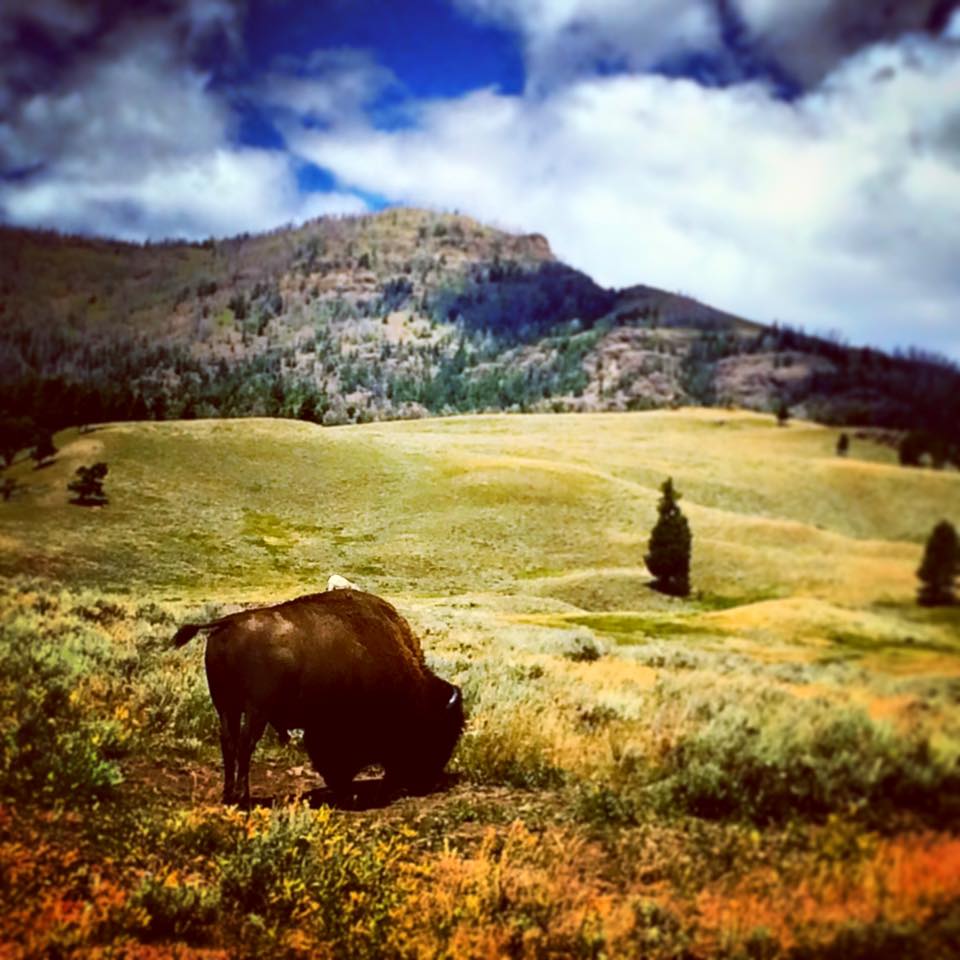
Bison in the Lamar Valley
If you have the time though and want to do some hikes, the Lamar Valley is for you. There are some great Yellowstone picnic spots in the Lamar Valley, and this is our top pick for being able to just stop on the side of the road and enjoy seeing bison while relaxing with a snack.
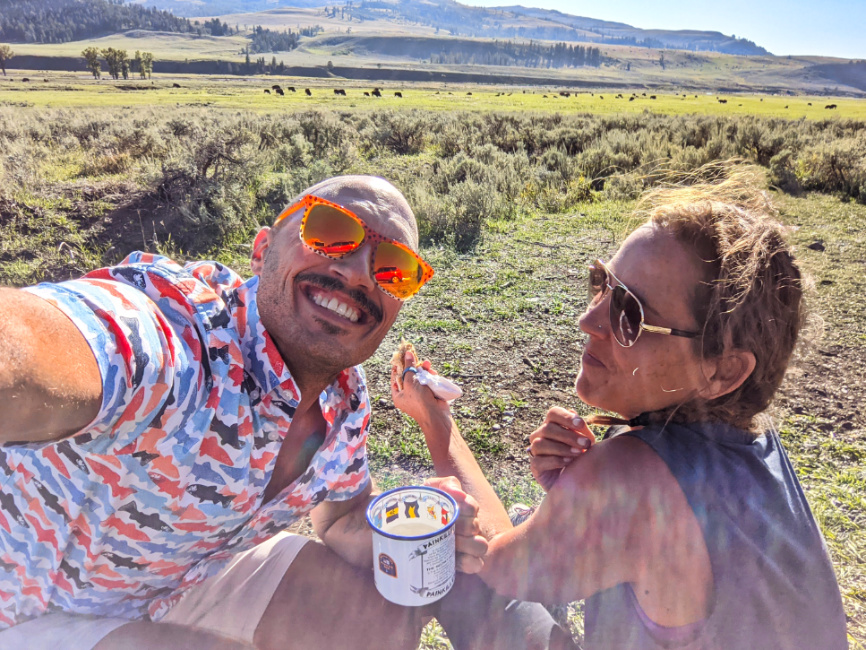
The Lamar Valley is also beautiful and has a river, but its landscape is very different. The Lamar River has cut through this flat valley floor and left a variety of scattered bluffs and oxbow lakes. The vegetation is primarily deciduous trees and where there aren’t trees, it is the rough and tumble prairie you’ve heard about in songs like Home on the Range (dry grass and tumbleweeds).
Tip: see our article on picnics in Yellowstone for some ideas of where to set up lunch and dine while viewing wildlife in Yellowstone.
While bison are the main thing that we see on our trips through the Lamar Valley, on previous visits we’ve also seen the wolf pack and several bears. The great thing about observing bison here is that there are many pullouts that allow you safe viewing distance and you’re not stopping traffic. The Hayden Valley offers these too, but they are fewer and there are hundreds more people. The Lamar Valley is a relatively empty retreat from the rest of the Park and it is well worth the extra time spent relaxing as the clouds roll by.
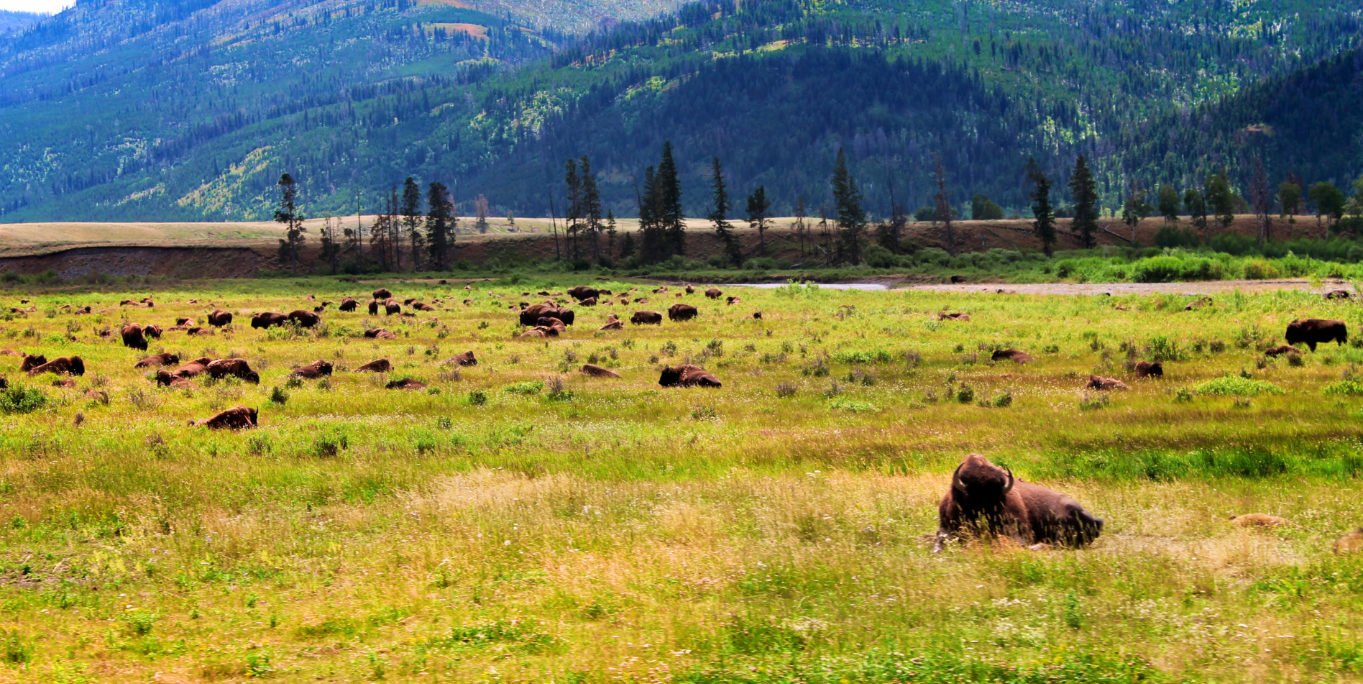
Where to see Moose in Yellowstone (and beyond)
Moose are one of the rarest sightings of wildlife in Yellowstone, if you ask us, but that’s just because we aren’t as lucky as some. Moose tend to hang out in marshy areas and along rivers. On previous visits we’ve had great luck seeing moose in the Fishing Bridge and Lake areas, and also along the Yellowstone river at dusk, but in recent times, they’ve been fewer and far between. Kayaking in Yellowstone early in the morning may offer good moose sighting opportunities.
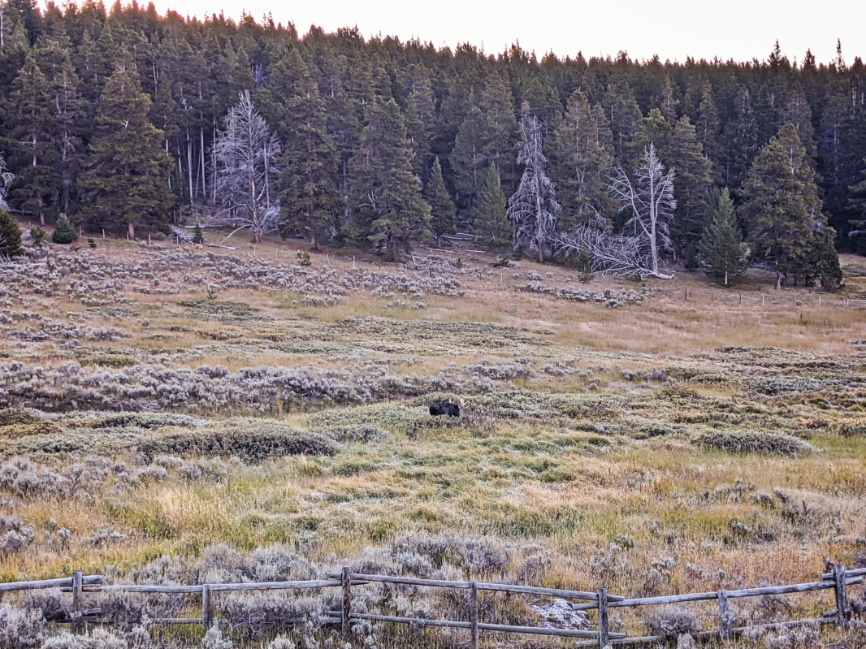
If you get the chance to sit and watch a moose for a while, they’ll quickly become your favorite animal, both for their rarity and goofiness. Even if you get skunked on seeing moose in Yellowstone, you’ve got the Tetons and Glacier National Park not too far away to try for them. We been fortunate to hit the jackpot for seeing moose in Glacier National Park (see video here) and also just outside of Yellowstone in the Cody, Wyoming area.
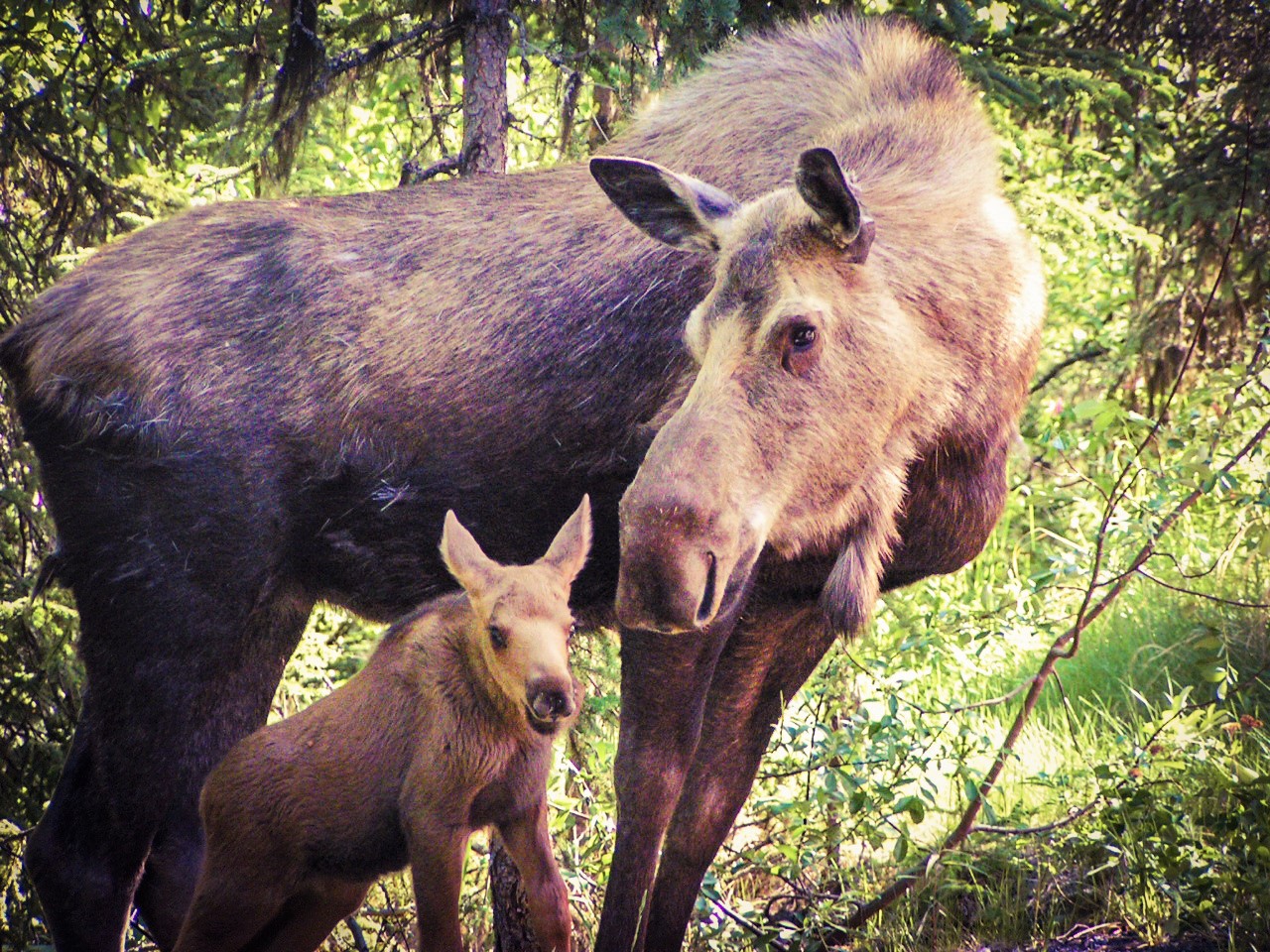
For most of the experiences with wildlife in Yellowstone, or any habitat for that matter, the early morning or dusk are the best times to see animals. That’s especially true with moose. Who knows where they go during the day, but yeah, we have the most success at dusk.
Tip: if you have the time, Grand Teton National Park is a day trip just to the south. The Tetons and Jackson Hole, WY are home to a larger moose population and they are statistically sighted more frequently there. The scenery is really amazing, and very different from Yellowstone. It is an easy way to add some extra fun and two extra stamps in your National Parks Passport.
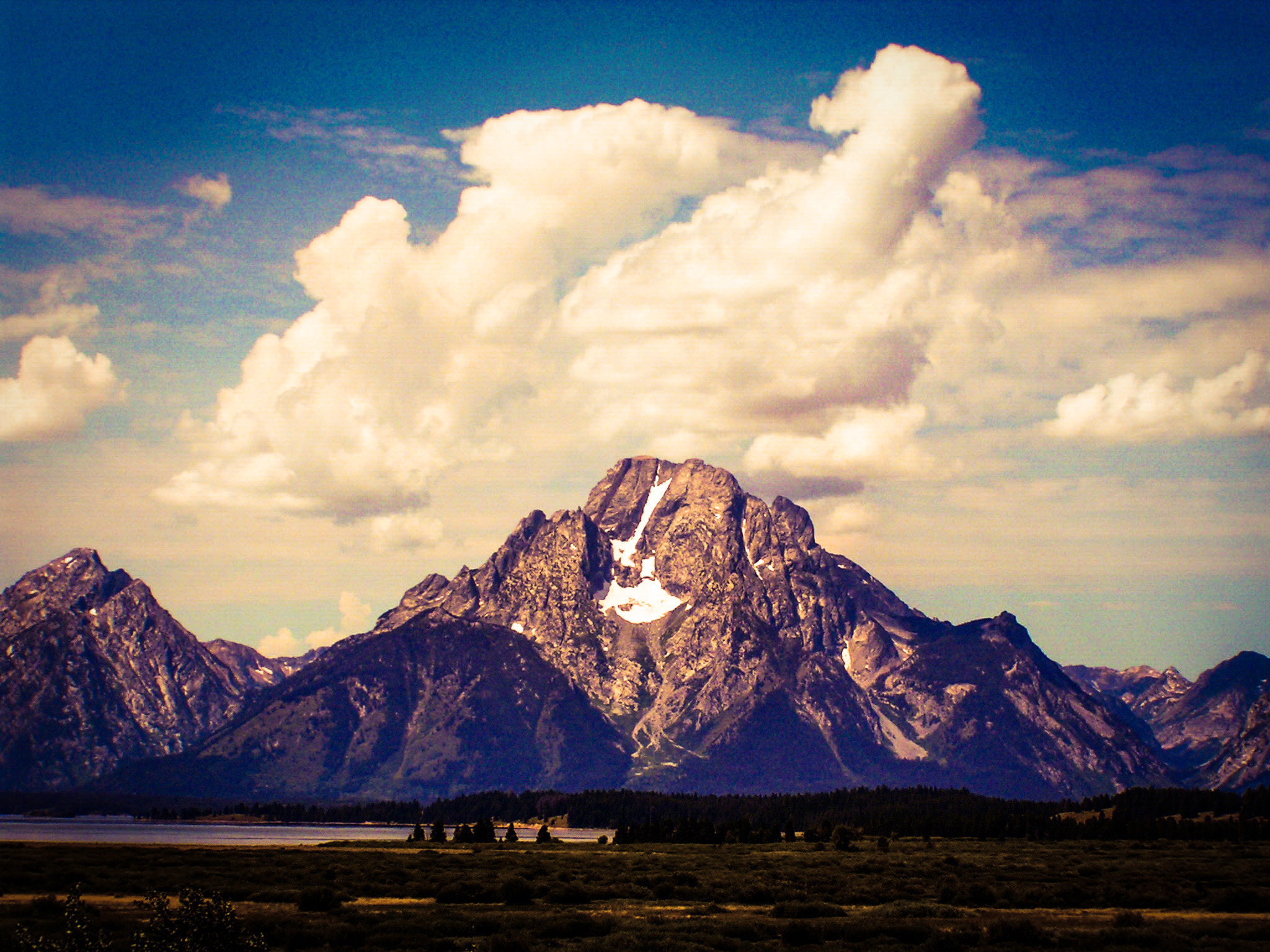
Best Elk Viewing in Yellowstone
The only guarantee in Yellowstone, besides Old Faithful, is seeing elk. The Mammoth Hot Springs area is the easiest place to spot them, as they do just linger by the Hotel and Park Headquarters. This is usually the mamas and babies, while the bull elk tend to be more centrally located deeper in the park.
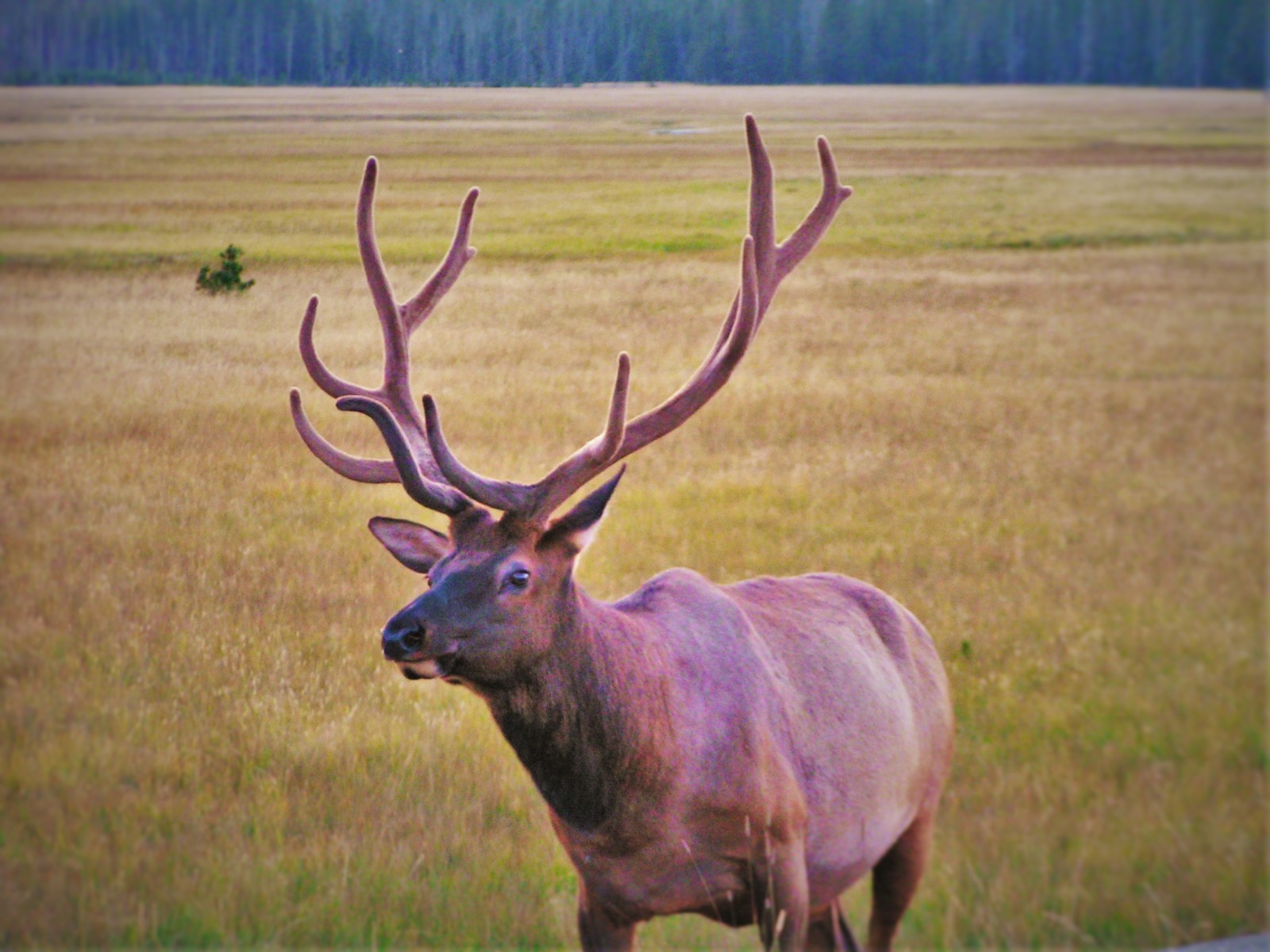
Our best experiences watching bull elk with enormous racks have been in the Canyon area, in the meadows and thin forest near the Visitor Center. I actually can’t think of a Yellowstone trip where we haven’t seen handsome, majestic bull elk here. I might even call seeing multiple bull elk together a guarantee…maybe. And not to waffle, but like I said, wildlife in Yellowstone isn’t a 100% spot on experience every day… but it is, but… just go see for yourself.
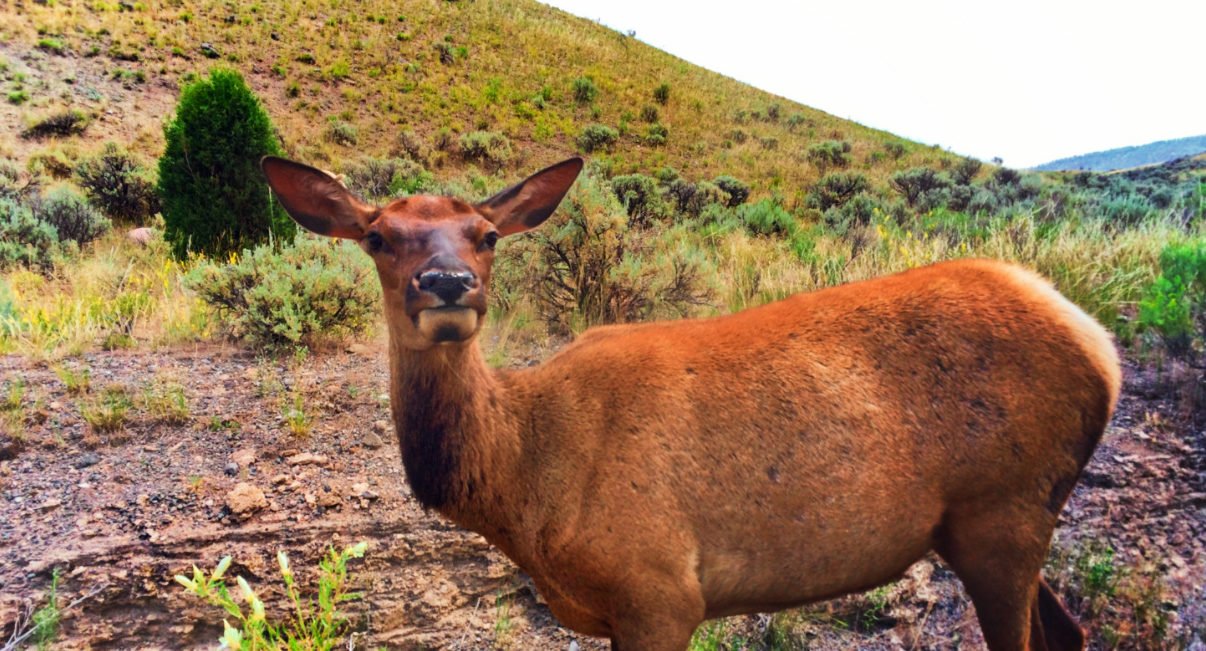
Safety Around Bull Elk
Because elk are so common in Yellowstone, like they are in Olympic National Park, you will see them in all areas of the park, including out on hiking trails. They cause traffic jams in the Madison Junction and Norris Geyser Basin areas, and you’ll see then walking between the springs at the Biscuit Basin geysers. Absolutely ALWAYS give them their space.
Cow elk usually have babies to protect. Bull elk have cows and territory to protect. And if you’re visiting Yellowstone at the end of the summer, that’s when the rut begins, which means that bull elk are bugling and charging. Give them space!
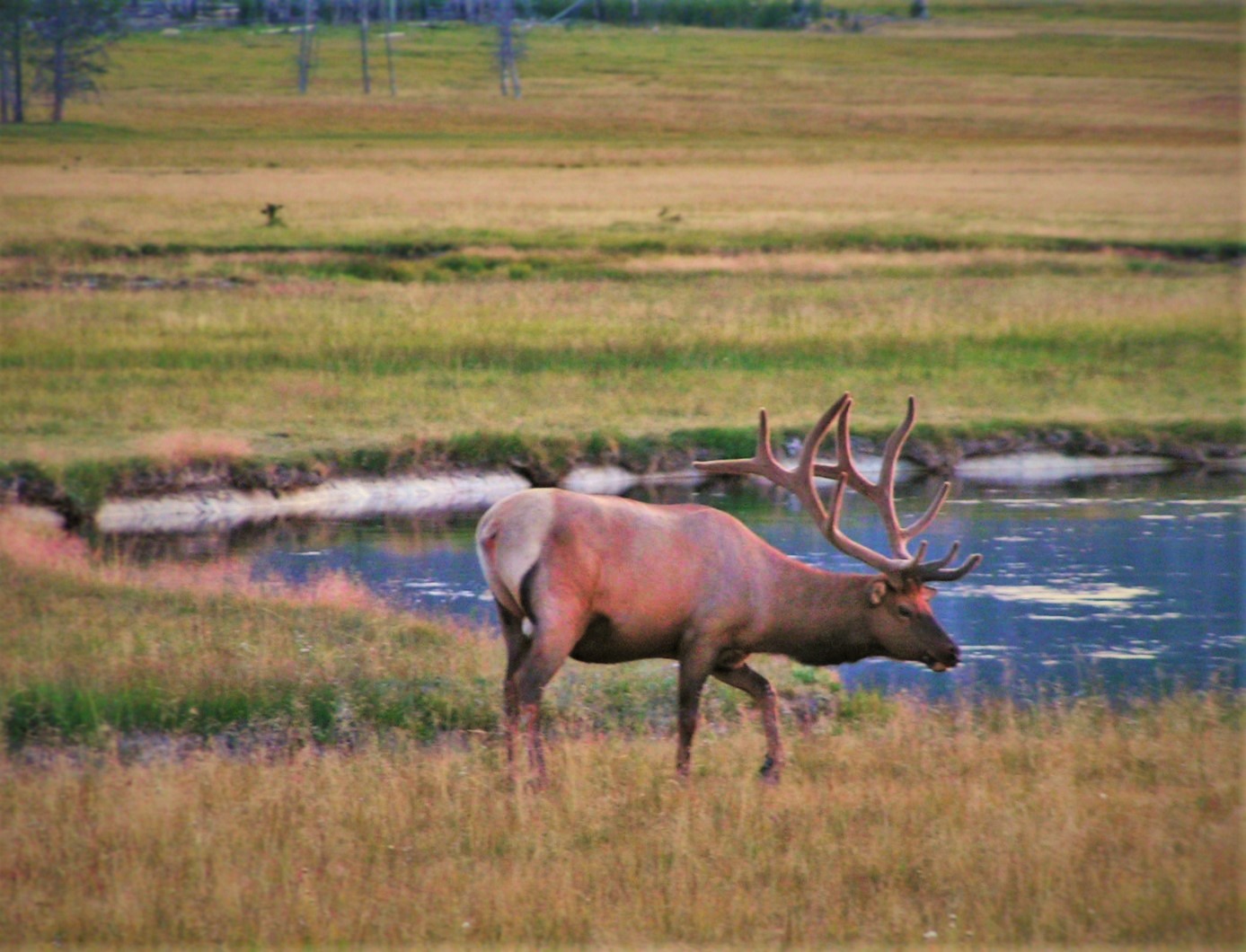
Seeing Pronghorn Antelope in Yellowstone
I love pronghorn antelope! They are smaller than deer and way more cute. With interesting fur patterns and very unique antlers, antelope are a really cool type of wildlife to see in Yellowstone National Park. They are a bit skittish if approached, which you’re not going to do anyways because you’re going to be respectful of wildlife, but they do tend to be very close to roadways.
The best places to see antelope in Yellowstone are in the Lamar Valley, very near the Yellowstone River at the west end of the valley, or in the Swan Valley between Norris and Mammoth Hot Springs. They blend in with the tall grass, but keep your eyes peeled and they’re start being visible all over the place!
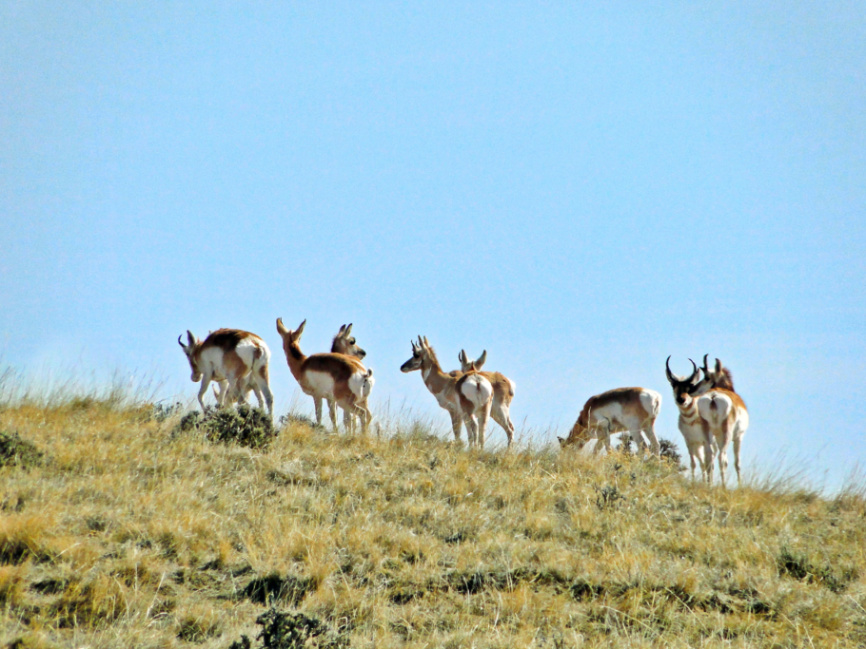
Best Bird Watching in Yellowstone National Park
Yellowstone is a birder’s paradise. We love spending time with our kids birdwatching in Yellowstone. Before you head out on your adventure to the park, be sure to print off the Yellowstone National Park Birdwatching Checklist!
Please note: The use of audio bird calls is illegal in the park.
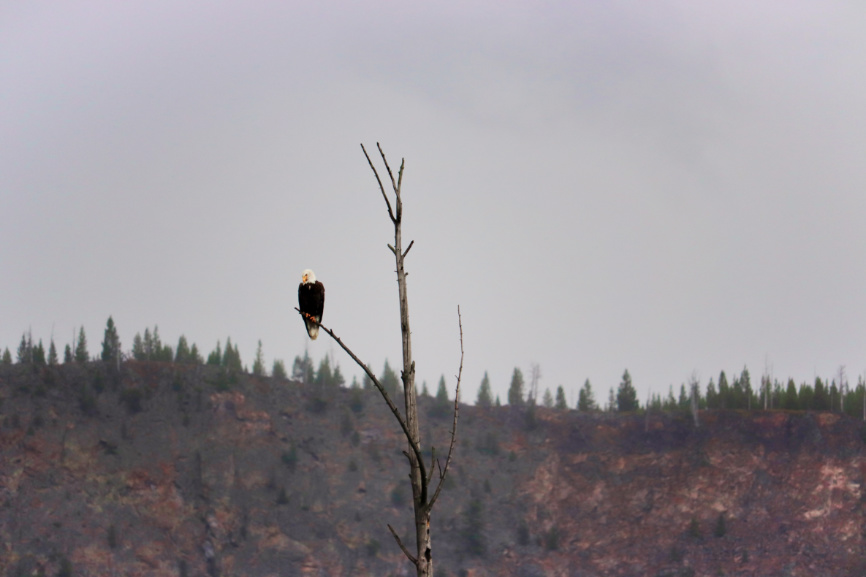
Large Birds to Watch For
We have been fortunate to see North American pelicans flying, fishing and swimming, all very close to us during a mid-day stop in the Hayden Valley and an early morning at Nez Perce Ford. They are much larger than coastal brown pelicans and are quite the sight to see in Yellowstone.
Trumpeter Swans are another big ticket for birdwatching in Yellowstone. We got to experience a family of trumpeter swans, resting and then swimming off from very close one evening on a drive north from the Lake area. Midday, the Yellowstone River, just south of the Upper Falls is a great place to see trumpeter swans. Head west to either the Madison or Swan Valleys and you’re likely to see the swans there too. They can be aggressive though, so keep your distance!
Bald Eagles and great blue herons are the last large birds we really look for in Yellowstone. One morning we got to have breakfast near a heron nest and talk with a group of researchers with a telescope who were documenting the heron family’s behavior. Waterways are always the best places to spot either of these species, so scan both the edges of lakes and rivers, as well at the tree tops.
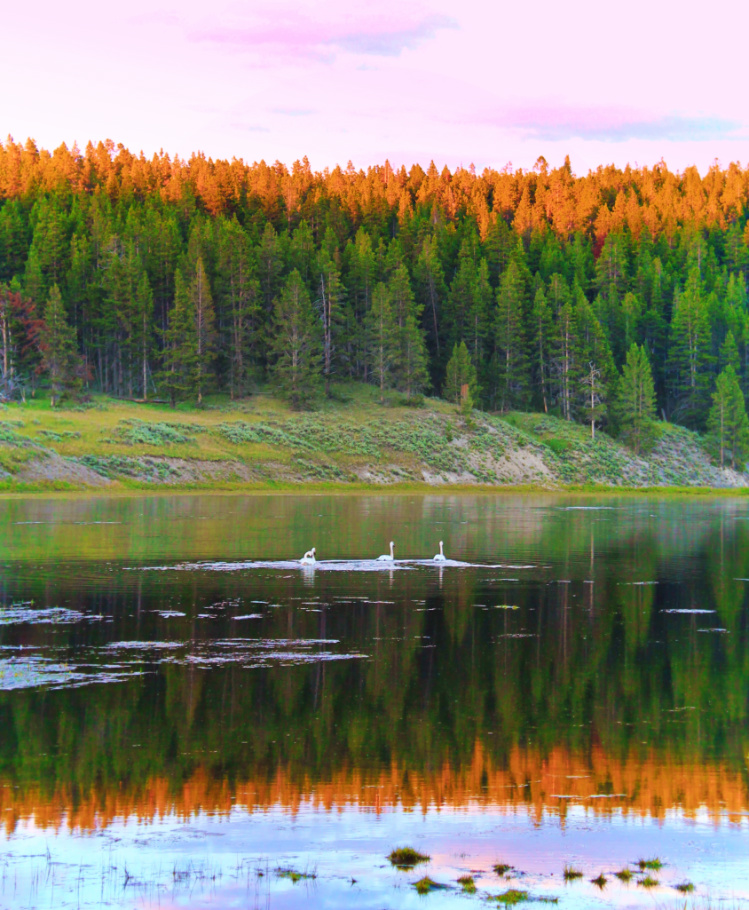
Bird Education in Yellowstone National Park
Did you know that there is a visitor center dedicated nearly all to the birds of Yellowstone National Park? It’s true! The Bridge Bay Visitor Center has an amazing collection of taxidermy birds and exhibits. They also have bird checklists and guides to help spot the different species while you’re watching for wildlife in Yellowstone. If you’re lucky, you might even score a ranger-led birdwatching experience, so check the boards at each visitors center for daily programs.
Bonus: to see the cutest video ever: our oldest son telling a stranger about the taxidermy pelican family… and their two dads. It was adorable and he’s adorable and, well, just watch the video.
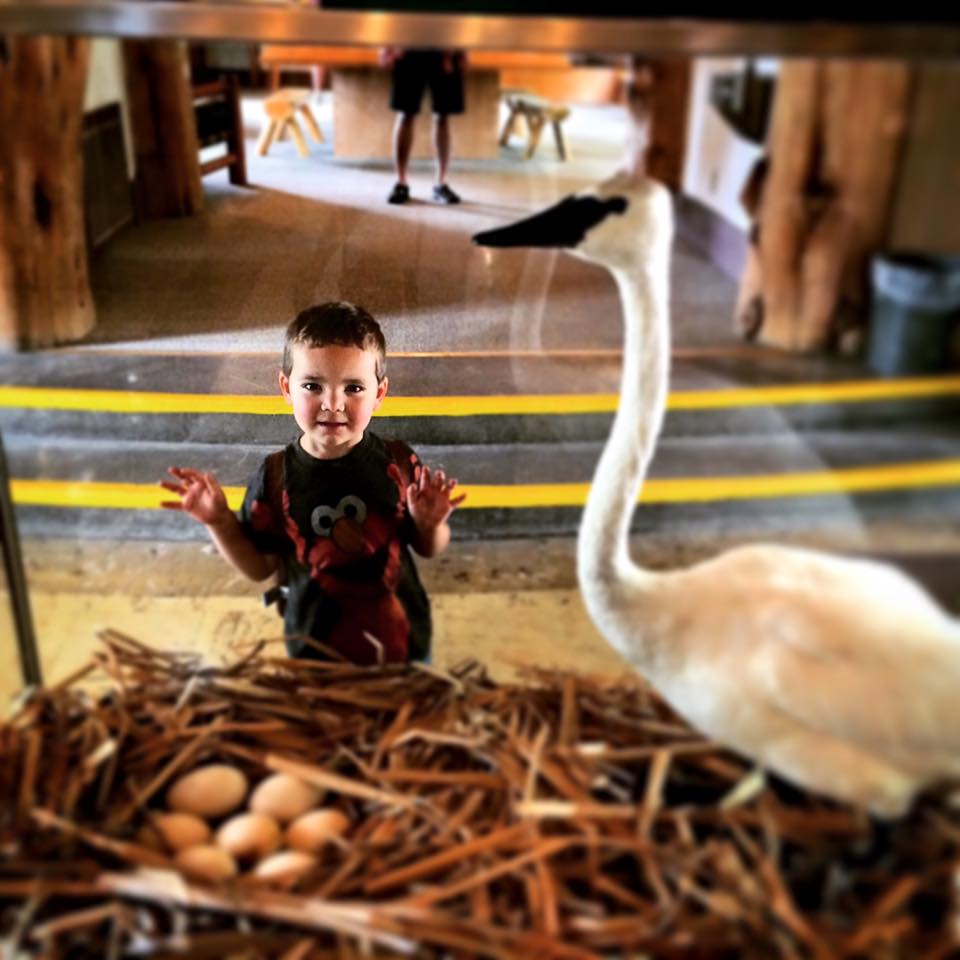
Rare Wildlife to See in Yellowstone
There are many more species of wildlife to see in Yellowstone, but some are very rare. We’ve not seen any bobcats or mountain lions, but we have seen the wolves, we’ve seen a wolverine, a badger and even the bighorn sheep.
To see the wolves of Yellowstone, you’ll mostly be watching for them in the Lamar Valley or on the road between Roosevelt and Canyon. You will need a telescope to see them well, and we’d even recommend booking a wildlife tour guide for the experience. While specific wildlife is never guaranteed, guides know the park very well and their experience pays off into your experience. Book a Yellowstone Tour here!
Tip: February is one of the best times to see wolves in Yellowstone. Yes, it’s covered in snow, but going then you’ll experience a totally different side of Yellowstone wildlife.
When it comes to badgers and wolverines, they are very solitary creatures, but can be seen, usually alone, in the valleys. They usually look like they’re frolicking and having fun, but that doesn’t mean they want to play with you.
The last wildlife in Yellowstone we want to be sure you watch for is bighorn sheep. There are two main areas to see them: Sheepeater Cliffs (Mammoth) and near the Cooke City / Silvergate park entrance. They tend to stay far from people, but if you’re hiking in the eastern reaches of Yellowstone, you’ll stand a good chance to see them.
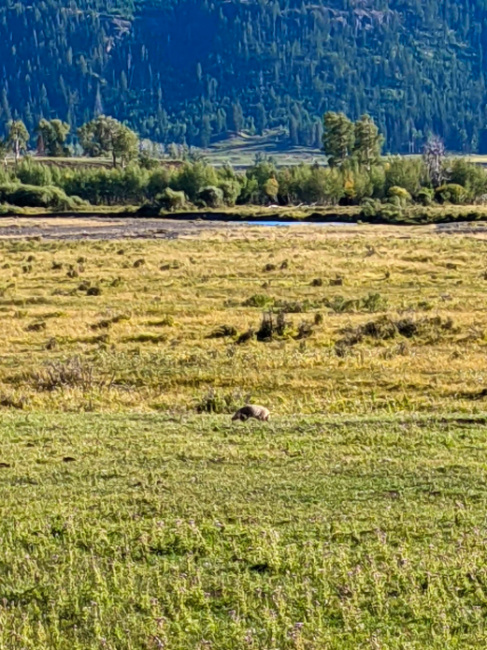
Wildlife Areas in Yellowstone National Park
To get a better grasp of the layout of Yellowstone National Park, click the map below for a larger version. Please note that there aren’t a lot of roads, but there sure are a lot of sites to stop. When in the Park, ask for an Experience Planner for a more detailed map showing common sighting locations and picnic areas.
If your main goal is seeing wildlife in Yellowstone National Park, plan to have time just sitting or going on hikes in the following areas:
- Hayden Valley
- Mount Washburn
- Lamar Valley
- Tower Falls area
- Swan Valley
Of course there is wildlife all over the place, but these are the best areas for seeing bears, bison, moose and doing some epic birdwatching in Yellowstone.
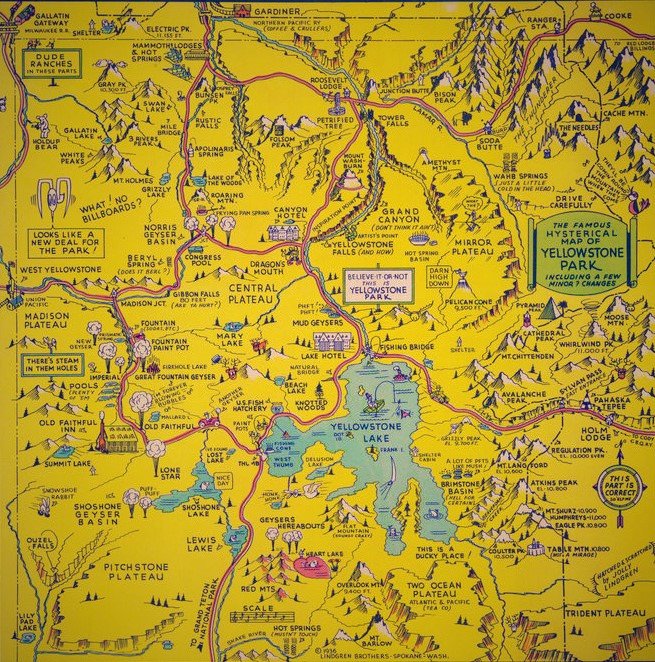
Besides what we’ve listed here, there is much more wildlife in Yellowstone, including wolves, otters, owls, and eagles. What have you seen? Where did you see it? Share your experience and questions in the comments below or via email.
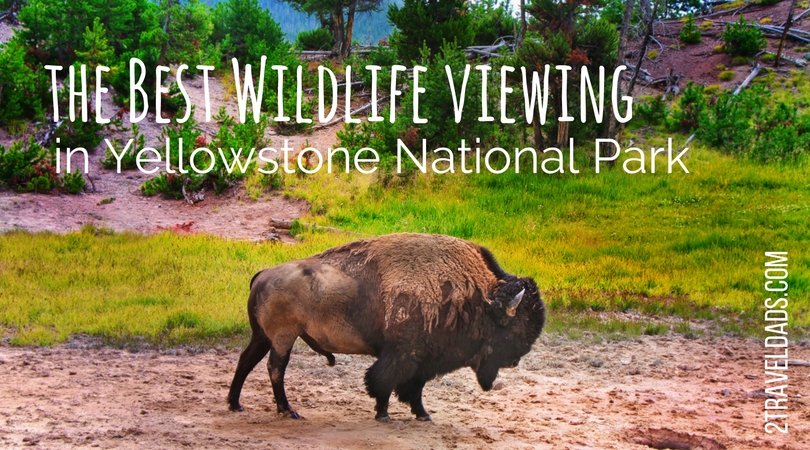
And want to pin this for planning your own epic time experiencing the best wildlife viewing in Yellowstone National Park? Go for it!
